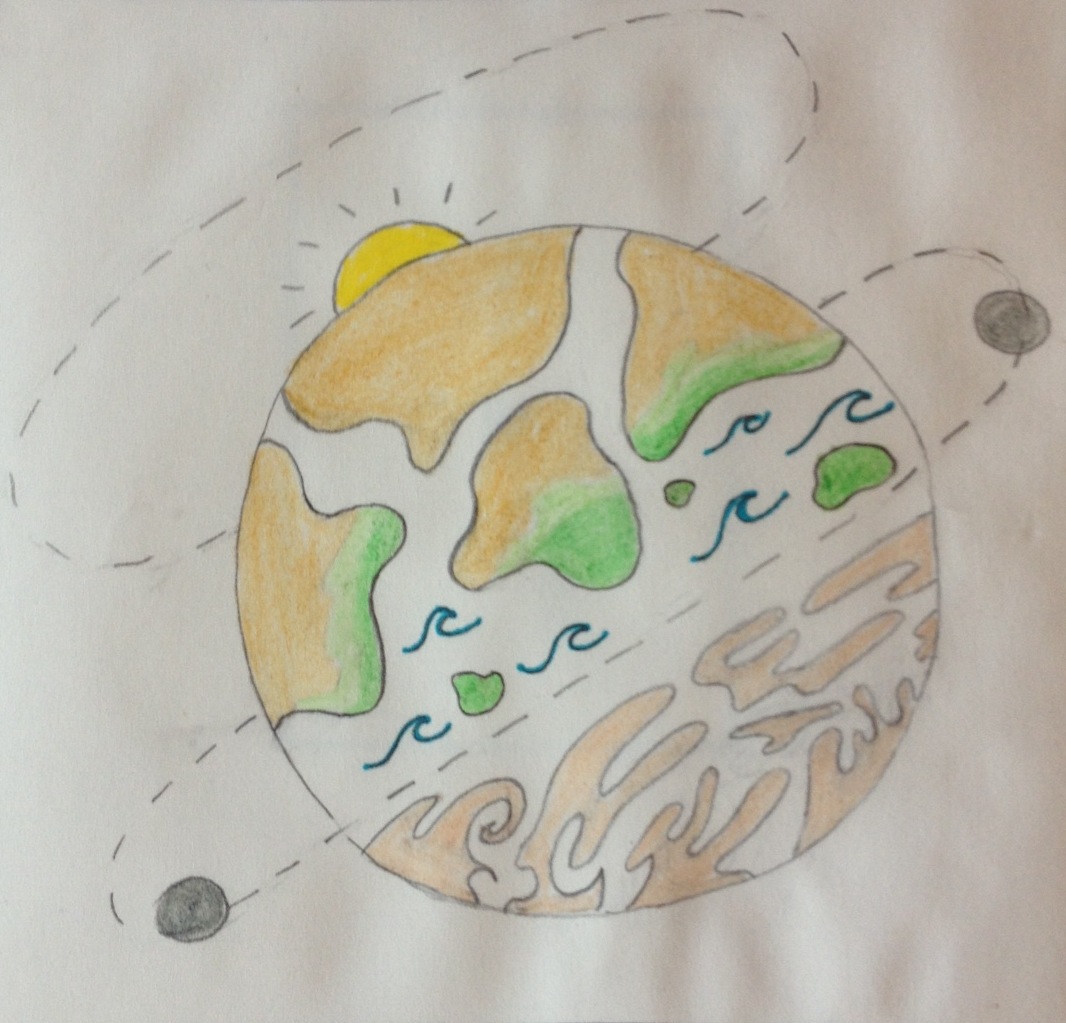Planet
Nobu is a small planet located 10,000 light-years away from planet
Earth. Nobu has a total of two moons and one large sun.
Due to the locations of the planet's two moons and one sun, the environmental conditions on the planet vary immensely. The
moons circle the southern hemisphere of the planet while the planet circles around the large sun, angled so the planet's northern
hemisphere received the majority of sunlight. The effects of the moons and sun create two distinct environmental conditions on the
planet, which are divided into two portions, called "lochi." Within these lochi, animal and plant species have adapted, through
evolution by natural selection, in various was to survive in their environments.

The Sirabu Lochi is the northern portion of Nobu that receives the greatest amount of sun exposure. Due to the closeness of the sun
to the planet, as well as the large size of the sun in comparison to the planet, the environmental conditions of the Sirabu Lochi are
extremely sunny, hot, and dry with limited water sources. As you will see, the plants and animals living in this climate have adapted
in many ways, which has enabled them to survive and thrive in this extreme environment.
The Ebabu Lochi is the southern portion of Nobu that receives only moonlight (no sunlight) from the two moons that encircle the planet.
In effect, this lochi remains extremely cold and dark, lit only by the light of the two moons. This property creates icy and dark
environmental conditions in the Ebabu Lochi. The gravitational pull of the moons creates very strong currents
and large waves within the oceanic portions of the lochi, which are interspersed through out the icy landmasses.
As you will see, the aquaticand land plants and animals in this climate have adapted in many ways, which has enabled
them to survive and thrive in this extreme environment.
Due to the locations of the planet's two moons and one sun, the environmental conditions on the planet vary immensely. The
moons circle the southern hemisphere of the planet while the planet circles around the large sun, angled so the planet's northern
hemisphere received the majority of sunlight. The effects of the moons and sun create two distinct environmental conditions on the
planet, which are divided into two portions, called "lochi." Within these lochi, animal and plant species have adapted, through
evolution by natural selection, in various was to survive in their environments.

The Sirabu Lochi is the northern portion of Nobu that receives the greatest amount of sun exposure. Due to the closeness of the sun
to the planet, as well as the large size of the sun in comparison to the planet, the environmental conditions of the Sirabu Lochi are
extremely sunny, hot, and dry with limited water sources. As you will see, the plants and animals living in this climate have adapted
in many ways, which has enabled them to survive and thrive in this extreme environment.
The Ebabu Lochi is the southern portion of Nobu that receives only moonlight (no sunlight) from the two moons that encircle the planet.
In effect, this lochi remains extremely cold and dark, lit only by the light of the two moons. This property creates icy and dark
environmental conditions in the Ebabu Lochi. The gravitational pull of the moons creates very strong currents
and large waves within the oceanic portions of the lochi, which are interspersed through out the icy landmasses.
As you will see, the aquaticand land plants and animals in this climate have adapted in many ways, which has enabled
them to survive and thrive in this extreme environment.